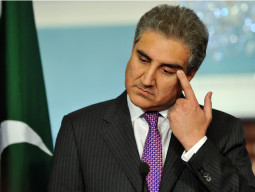
ISLAMABAD: Amid Pakistan’s delay in releasing the debt management report, the International Monetary Fund (IMF) has termed a regular assessment of the debt structure ‘important’, hoping Islamabad will soon release its progress in managing fiscal constraints.
“Strengthening public debt management is a critical component of the broader public finance management reforms agenda,” said Tokhir Mirzoev, resident representative of the IMF in Islamabad. He was responding to a question about the importance of publishing the Risk Report on Debt Management the government has withheld since March this year.
The comments made by the IMF official are likely to put more pressure on the government, as the Senate Standing Committee on Finance has also taken notice of the government’s decision to delay the release of the report.
Headed by Senator Saleem Mandviwalla of the Pakistan Peoples Party, the standing committee is expected to take up the issue in its December 6 meeting.
Sharif, Zardari assets exceed country’s debt, claims Imran
“Regular and transparent periodic assessments of the public debt structure and associated risks are important to inform policy decisions on debt management,” said Mirzoev. He said that the IMF was not aware of the reasons behind the non-publication of the Debt Management Risk Report in recent months and hopes that it will resume.
The finance ministry released the last debt management risk indicators report in December 2016. Under a commitment given to the IMF, the next report was due in March 2017. However, no report has since been launched.
The report covers indicators such as Pakistan’s foreign currency debt as a percentage of the official foreign currency reserves, debt refinancing risks, interest rate risks and contingent liabilities. Some of those indicators have significantly deteriorated since the publication of the last report.
Pakistan had started giving quarterly reports on insistence of the IMF. The global lender had imposed a structural benchmark that made it binding on the finance ministry to publish quarterly debt management risk reports.
The reports were aimed at covering all government liabilities - including guarantees - in order to allow monitoring of fiscal and financial risks and implementation of the medium-term debt strategy.
The risk report for the end June 2017 period will be published on the Finance Division website shortly, said the Ministry of Finance without explaining the reasons behind the delay. The finance ministry also did not mention why it was not releasing the March 2017 period report.
In its handout, the Ministry of Finance had claimed that “the government has never published risk report on debt management on a quarterly basis even during the IMF programme”. The finance ministry made a false claim, as the March 2016 and June 2016 debt risks report are still available on its website.
Officials in the finance ministry said that the government would release the report before the start of talks with the IMF, which are scheduled to begin from December 5. The talks are planned to continue till December 14. These are Post Programme Monitoring talks of the $6.3 billion Extended Fund Facility Programme that ended in September last year.
As was widely expected, the government adopted an expansionary fiscal policy and also abandoned reforms in the energy sector after expiry of the IMF programme.
PTI leader censures government for accumulation of foreign debt
Pakistan’s debt sustainability indicators have significantly worsened in the past one year due to increase in foreign exchange and refinancing risks, which appears to be the result of growing domestic borrowing needs and the government’s inclination towards foreign commercial loans.
The short-term foreign currency debt as a percentage of official liquid reserves and net international reserves appeared on the higher end in FY2016-17, which would increase risks attached with the foreign currency-related obligations.
The ratio of domestic debt maturing in one year has also increased by the end of FY2016-17. The ratio of external debt maturing within one year went up.
As of end June, Pakistan’s total debt and liabilities stood at Rs25.1 trillion, which were equal to 78.1% of the GDP. The gross public debt, which is the responsibility of the government directly or indirectly, was Rs21.4 trillion or 68.1% of the GDP, according to the State Bank of Pakistan.
Published in The Express Tribune, November 28th, 2017.
Like Business on Facebook, follow @TribuneBiz on Twitter to stay informed and join in the conversation.















































COMMENTS
Comments are moderated and generally will be posted if they are on-topic and not abusive.
For more information, please see our Comments FAQ